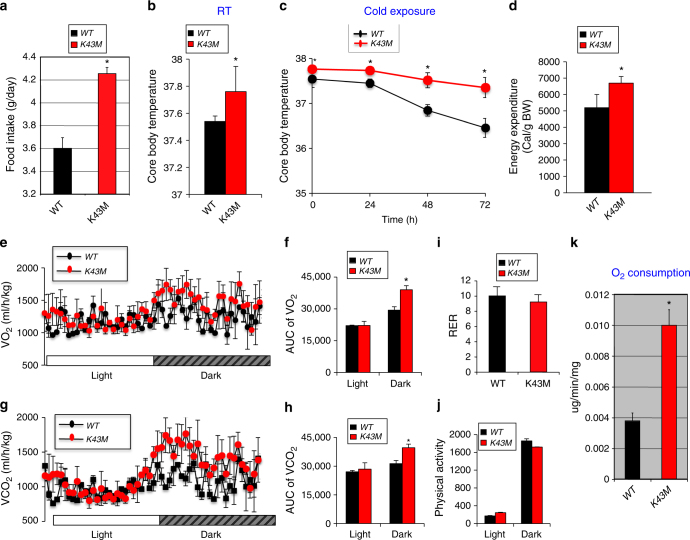Fig. 3.
Loss of CDK6 kinase activity in mice leads to increased food intake, body temperature, adaptability to cold exposure and energy expenditure. a Bar graphs demonstrating food intake of age-matched male WT and K43M mice at 18 weeks of age. b, c Core body temperature of male mice at room temperature (b, RT) or at 4 °C (c) for up to 72 h (n = 6 per group). d Energy expenditure (EE) was calculated based on the formula below: EE = (3.815 + 1.232 × RER) x VO2/lean mass (g). For a–d, data are expressed as mean ± S.E., *p < 0.05, vs WT, t-test. e–h, Oxygen consumption (VO2) (e, f) and CO2 production (VCO2) (g, h) from metabolic cages of male WT and K43M mice on NCD (n = 6) in 12 h light and dark phases. VO2 and VCO2 were normalized by lean mass. *p < 0.05, vs WT, log-rank tests. i Bar graphs displaying mean Respiratory Exchange Ratios (RER) over 24-h period. RER was calculated as the volume of CO2 vs the volume of oxygen (VCO2/VO2). j Physical activity of male WT and K43M mice in the periods of 12 h light and 12 h dark phase. k Ex vivo oxygen consumption of iWAT homogenates from different WT and K43M mice. Data are expressed as mean ± S.E., *p < 0.05, vs WT, t-test

